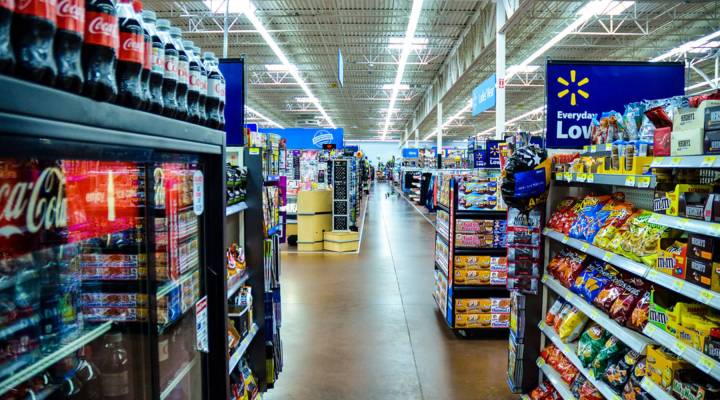
The “deep, dark secret” that changes how you shop for groceries
Share Now on:
The “deep, dark secret” that changes how you shop for groceries

You’re not imagining it — all those candy bars and chip bags sitting in the checkout aisle are meant to tempt you, and some company paid a lot of money to get them there.
Food manufacturers pay millions of dollars in shelving fees in order to pick where their products end up in a store, according to a report released this week from the Center for Science in the Public Interest. The report detailed the inner workings of the grocery industry, and called on the Federal Trade Commission to take a closer look at these food display practices since they influence what kinds of food consumers have access to.
“Outside of the meat, produce, and dairy sections, nearly every inch of today’s store is for sale,” wrote the report’s author Gary Rivlin. “That means that the layout of a store is more about what manufacturers want than the desires of consumers.”
One insider told Rivlin that placement fees — the money manufacturers pay retailers to get their products on shelves — is a “deep, dark secret of the retail world.”
Stores keep pricing details opaque, the report said, so food brands often don’t know what their competitors are paying. Plus, prices vary depending on where in the store a company wants its product placed. Introducing a new product can cost a manufacturer “at least several hundred thousand dollars, if not $1 million or more.” Rivlin gives this example:
“A store doesn’t care if you’re company A or company B. They’re going to go with the most favorable deal term. There’s only so many square feet on that shelf. There are always winners and losers in that battle.” In 2014, the Campbell Soup Company cut back on its promotional spend—and saw its sales fall by more than 5 percent that year.
The environment is especially tough for newer or smaller brands, according to Rivlin, especially those trying to push a healthy food product. They don’t have the money to buy prime spaces.
The the most coveted spot in a store? The checkout aisle. A spot there can set a manufacturer back as much as $1 million a year for just one product. Here are a few more pricing estimates for certain food products, as outlined by specific examples in the report:
Candy at the checkout aisle

One broker told Rivlin the checkout aisle is the “beachfront property” of grocery shelves. Everyone has to pass through there, so customers are most likely to make an impulse buy. Space on these shelves are priced by the inch, with estimates ranging from $3-5 an inch. The placement is especially important to candy makers because consumers don’t often visit the candy aisle in a store, so the checkout shelving may be the only chance for a sale.
Ice cream

The report highlighted Clemmy’s, a brand of sugar-free ice cream that went out of business after a few years of trying to keep up with bigger brands. The company’s founder Jon Gordon told Rivlin that he spent more than $1 million in fees to sell in 9,000 stores.
Soda

A company looking to sell a new soda brand in a store can expect to pay $2 million for a “national rollout,” but that doesn’t account for any promotional fees that a company has to pay to keep the soda on the shelves year-round. The report doesn’t spell out how many stores are included in a nationwide rollout, but did note that there is a total of 38,000 retail grocery stores in the U.S.
Condiments

One insider said he pays between $5,000 and $20,000 to get just one kind of condiment on a shelf. Much like other products, payment comes in the form of money or free inventory.
There’s a lot happening in the world. Through it all, Marketplace is here for you.
You rely on Marketplace to break down the world’s events and tell you how it affects you in a fact-based, approachable way. We rely on your financial support to keep making that possible.
Your donation today powers the independent journalism that you rely on. For just $5/month, you can help sustain Marketplace so we can keep reporting on the things that matter to you.












